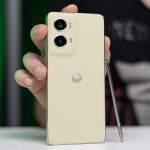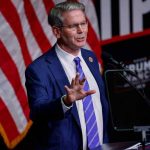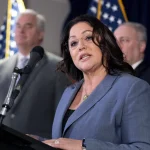David Orrell/CNBC/NBCU Photo Bank/NBCUniversal via Getty Images
- St. Louis Fed President James Bullard told the Financial Times raising interest rates to a neutral level won’t be enough to curb high inflation.
- Bullard said the Fed needs to go well beyond a neutral rate, which is estimated at around 2.4%.
- Bullard in March voted for a rate hike of 50 basis points while his colleagues opted for a smaller increase.
St. Louis Federal Reserve President James Bullard said the central bank needs to raise interest rates well above a so-called neutral level if it wants to be effective in taming inflation, the official told the Financial Times.
“There’s a bit of a fantasy, I think, in current policy in central banks,” Bullard told the FT in an interview published Wednesday. “Neutral is not putting downward pressure on inflation. It’s just ceasing to put upward pressure on inflation.”
The interview was his latest call for the Fed to be aggressive in tightening monetary policy during a cycle that kicked off in March. A neutral level of interest rates would neither feed nor starve economic activity. The estimated neutral rate is around 2.4%, the report said.
The Federal Open Market Committee in March voted 8-1 to raise its ultra-low fed funds rate of 0% to 0.25% by 25 basis points. Bullard cast the dissenting vote and said in a March letter that a rate hike of 50 basis points “would have been a better decision” to quickly arrest high inflation. The Fed aims to foster inflation that averages 2% over time.
Headline inflation accelerated 8.5% year-over-year in March, the fastest increase since December 1981. A leap in gas prices and higher prices for shelter and food contributed to pushing the headline rate up from 7.9% in February.
The FOMC has signaled that at least six more rate hikes are in the pipeline, and committee members have increasingly hinted that some of those increases will lift rates by 50 basis points. Most notably, Fed chair Jerome Powell in March said the Fed must move “expeditiously” and “possibly more aggressively” if it’s to effectively rein in price growth. Powell also left the door open to a hike of 50 basis points.
“The labor market is very strong, and inflation is much too high,” he told a National Association for Business Economics conference. “If we conclude that it is appropriate to move more aggressively by raising the federal funds rate by more than 25 basis points at a meeting or meetings, we will do so.”
Wall Street has similarly embraced the possibility of at least one 50-basis-point hike in 2022. Goldman Sachs economists updated their projections in late March to call for such increases at the FOMC’s May and June meetings. Citigroup expects four consecutive hikes of 50 basis points.
US gross domestic product grew at an annualized rate of 6.9% through the fourth quarter of 2021, well above the median forecast of 5.5% in a Bloomberg survey of economists. The first reading of first-quarter 2022 GDP is set for release on April 28.
Powered by WPeMatico






